Fantasizing about your dream garden but constrained by a budget? Concerned about the environmental impact of your
magnum opus? Planning to do the work yourself but lack the skills of a master builder? Fear not. There’s hope for you.
Consider “softer” hardscaping for your little patch of paradise: a path made of gravel instead of mortared and grouted stone; a planted screen versus a fence; a broad-canopy tree overhead rather than an arbor for shade.
Go ahead and lighten up the built elements of your garden. Easy on the budget and requiring no specialized skills, softer hardscaping just might be the solution to creating the beautiful, timeless, earth-friendly landscape of your dreams. Here are some successful examples of softer hardscape elements.
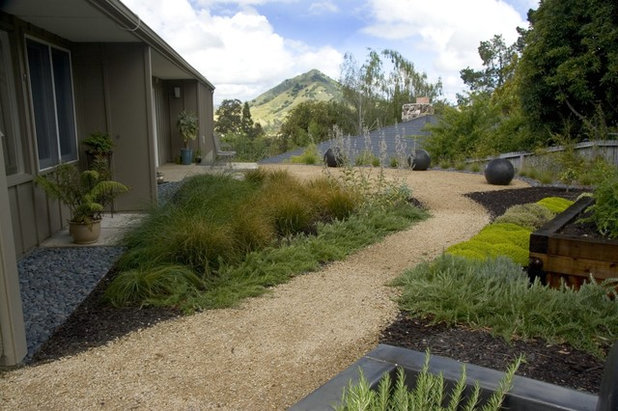
Jeffrey Gordon Smith Landscape Architecture
Paths made of inexpensive bulk material. Whether you choose gravel, mulch or decomposed granite, permeable, earthy materials and organic lines integrate seamlessly with the setting, whereas structured paths can read as separate from their surroundings.
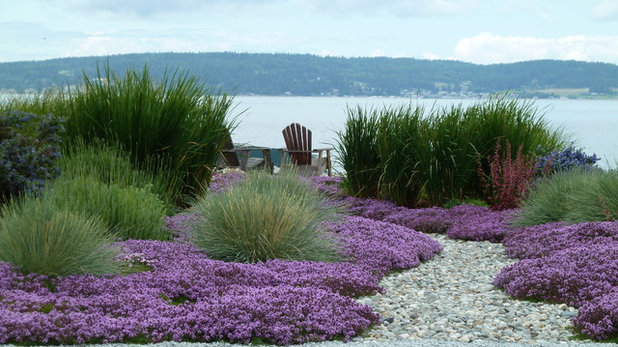
Lankford Associates Landscape Architects
This
gravel path leads to the desired destination, at low cost and with nominal environmental impact. Can’t you hear the crunch of the gravel underfoot and feel the warmth it gives off? And wouldn’t a heavily built path look out of place in this setting? Select locally sourced gravel to lighten your footprint even more, with the added benefit of giving the composition a sense of place.
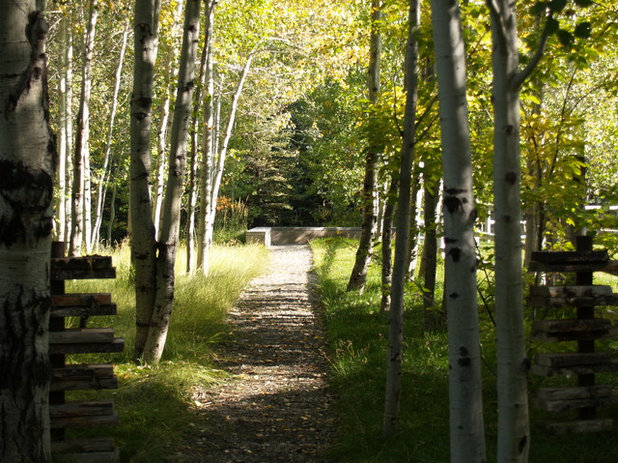
Randy Thueme Design Inc. - Landscape Architecture
Simple. Easy to build. Permeable. Sustainable. Inexpensive. What’s not to love? This naturalistic
mulch path, with 100 percent recycled content, is über-inviting. Strong geometry executed with relaxed materials provides the best of all worlds: a direct path between points A and B and an invitation to linger.
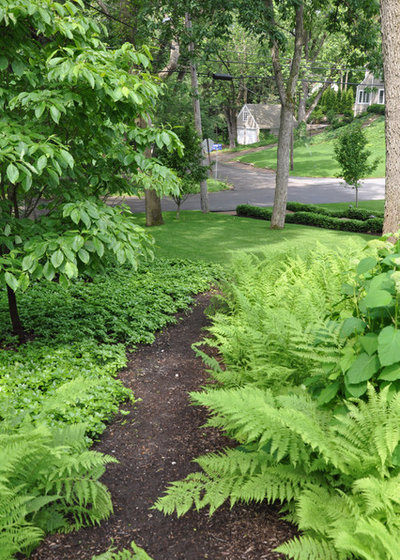
The Carter Rohrer Co.
An unbordered mulch footpath. This tranquil vignette is so inviting. It's hard to imagine attaining the feel of this composition using a concrete path, a boardwalk, stepping stones or other hard materials.
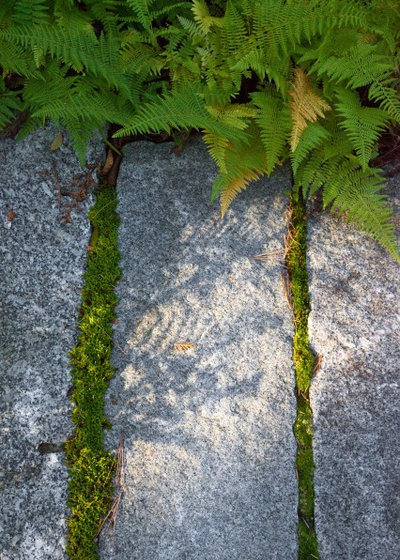
Matthew Cunningham Landscape Design LLC
Paths with planted joints. Here, planted joints soften a stone walk. The addition of even the smallest amount of greenery provides a tremendous amount of visual softening. Use local stone to keep transportation requirements low and wider joints to increase permeability.
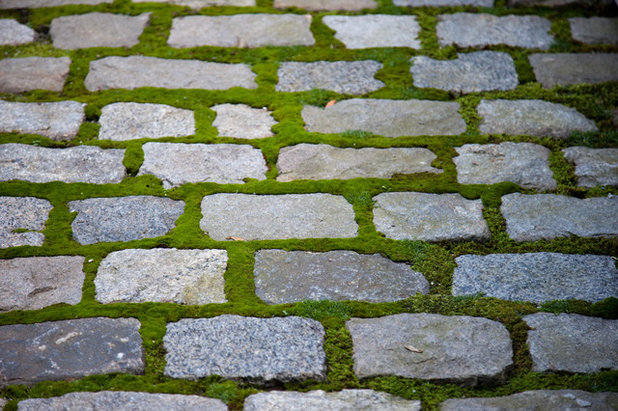
Matthew Cunningham Landscape Design LLC
Ahhh ... just think how different this path would feel if it were solid stone. This planted
cobblestone surface is beautiful and
permeable.
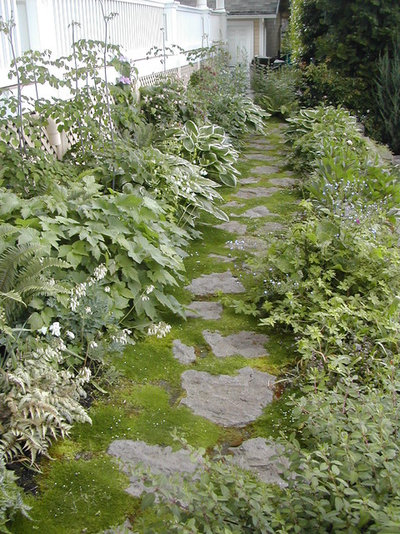
Samuel H. Williamson Associates
Stone set over soil with planted joints costs much less and uses fewer resources than a grouted and mortared stone path. It also integrates well with the adjacent plantings while adding dimension, texture and pattern to the composition.
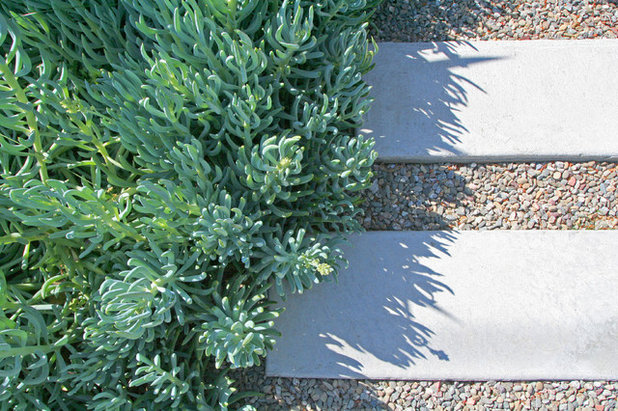
Shades Of Green Landscape Architecture
Paths with gravel joints. Softer hardscapes blend beautifully with other components of the landscape, rather than standing proud on their own. The plants, pavers and gravel in this photo comprise a single unified (and permeable) composition.
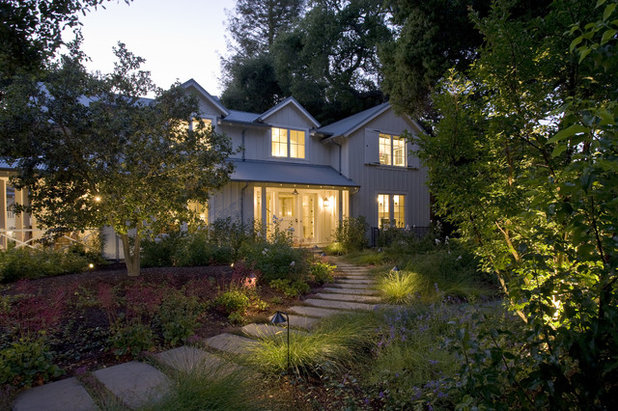
Arcanum Architecture
Lightening up the hardscape doesn’t mean losing heavy-duty function. This path, comprised of large
flagstones set in a mortar bed with planted joints, is the primary path to the entry porch.
Don’t let its naturalistic look fool you. It delivers all the necessary functions of an entry path: It looks great, clearly delineates the route to the front door, allows visitors to walk two abreast, keeps your shoes clean, provides sure footing and can handle a loaded refrigerator dolly. Plus, it requires fewer materials to install than a harder path.
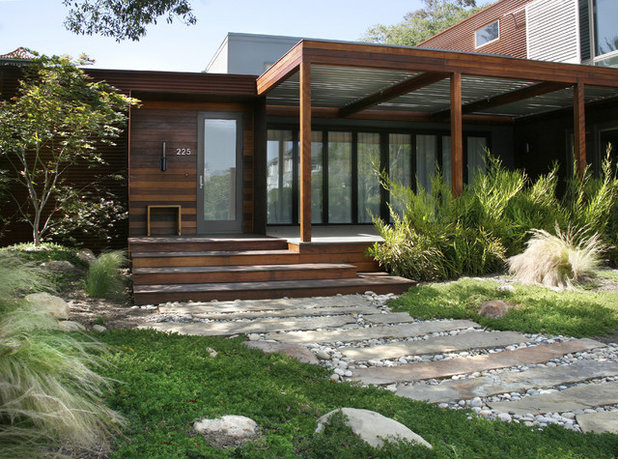
Margie Grace - Grace Design Associates
Monolithic stone slabs over soil. Pebble joints add permeability and textural interest. Visually, and in terms of resource consumption, this is so much lighter on the land than a solid walk.
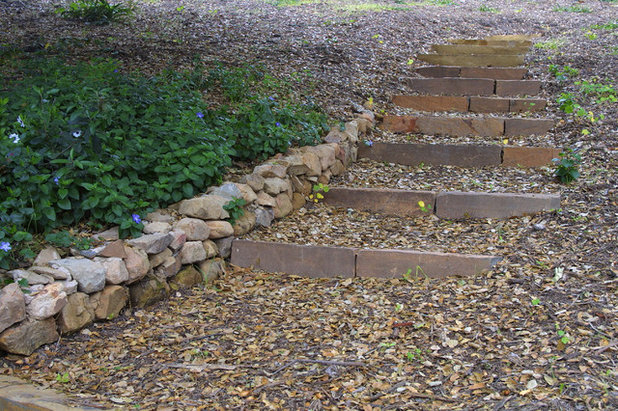
Margie Grace - Grace Design Associates
Softer steps. Chopped stone set in a mortar bed forms the risers of these steps; recycled green waste mulch over compacted soil forms the treads. Dry stacked fieldstone provides soil retention where needed. Although they may not be suitable at the front door, softer hardscape elements farther from the house provide a close-to-nature experience.
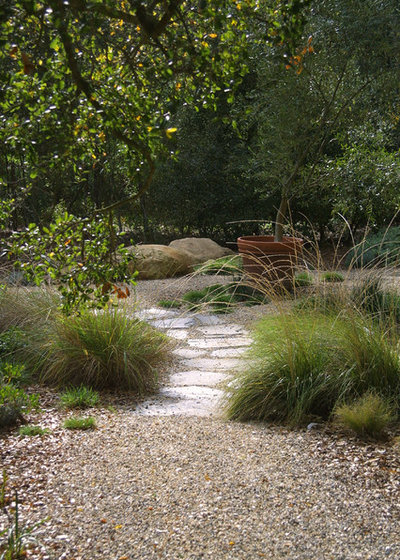 Gravel walks
Gravel walks connected by a narrow footpath of flagstone set over soil with gravel joints. There's a lot of bang for your buck here: You get texture, rhythm change and pattern. And by using less stone (which is more expensive than gravel), you'll save a ton of money and enhance the design.
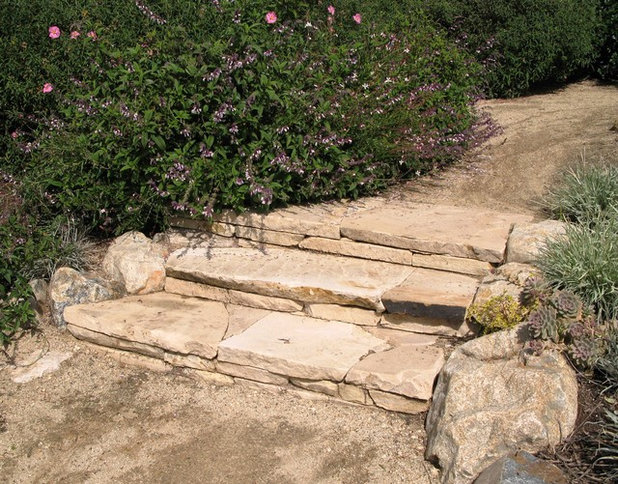
debora carl landscape design
Decomposed granite path. Blend mortared, stacked flagstone steps with boulders and cobbles as needed for soil retention. One color palette plus three materials equals a harmonious composition rich in texture, color, depth and pattern.
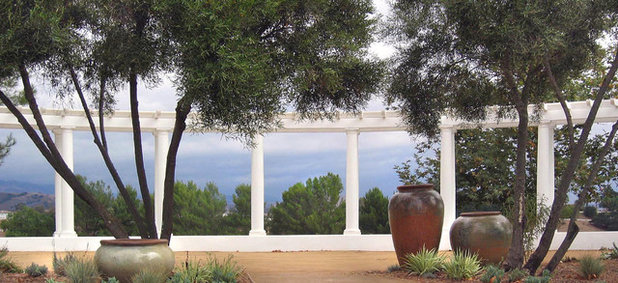
Margie Grace - Grace Design Associates
Get the most out of the resources you have by designing
multifunctional spaces. This space leads to the garage, provides overflow parking if needed and serves as patio space for large gatherings. It's fully accessible, permeable and super low-maintenance, and it requires no additional resources (such as water and gas to run the mower). And it's goregous to boot!
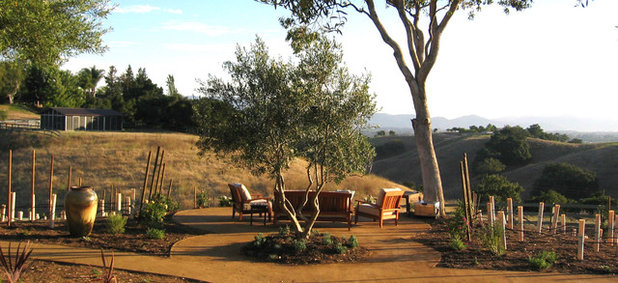
Margie Grace - Grace Design Associates
Choosing softer hardscaping doesn't mean compromising
function. These decomposed granite walks provide a quarter mile of accessiblity throughout this site, critical for a chair-bound homeowner who had never been in his own garden (!). The meandering paths provide vista points, areas in which to linger, speedy yet easily negotiated slopes, and a variety of garden experiences designed to be enjoyed from chair height. In addition, built-in seating areas, such as well-placed boulders, walls and benches, provide ample opportunity for the homeowner's guests to join their host at seat height for comfortable conversation.
More:Patio Pavers Go Green In Between
Planning Paths and Walkways
Permeable Paving Soaks Up Rain





